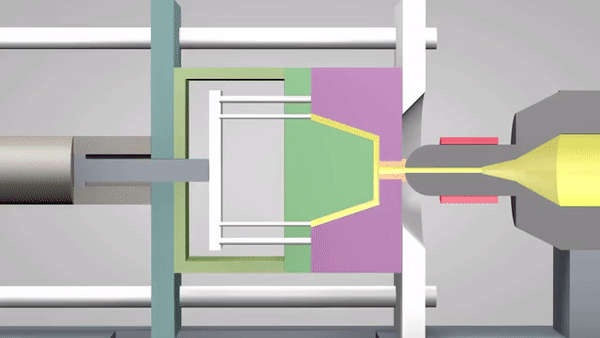How Additive Manufacturing can Save You Time, Stress, and Money.s
Wiki Article
Little Known Questions About Plastic Manufacturing.
Table of ContentsThe Best Strategy To Use For Additive ManufacturingExcitement About Plastic ManufacturingDie Casting Fundamentals ExplainedFascination About Hon Hai PrecisionAn Unbiased View of Hon Hai PrecisionAdditive Manufacturing - Questions
The message on this web page is an example from our full White Paper 'Injection Moulding for Customers' - * Example message * - for complete guide click the download switch above! Intro This overview is intended for individuals who are aiming to resource plastic mouldings. It offers a much needed understanding right into all that is involved with producing plastic parts, from the mould tool required to the moulding process itself.If you wish to check out additionally, the overview covers kinds of mould devices, along with special finishing procedures such as colours & plating. Words that are underscored can be found in the glossary in the appendix ... Component I: Moulding: The Fundamentals The Benefits of Injection Moulding Plastic shot moulding is a really specific process that provides several benefits over other plastic handling methods.
Precision is ideal for very elaborate components. Contrasted to various other methods, moulding allows you to include even more functions at really small tolerances. Look at the photo to the right. lean manufacturing. You can hold this moulding in the hand of your hand and also it has managers, ribs, steel inserts, side cores as well as openings, made with a sliding turned off feature in the mould device.
The Main Principles Of Hon Hai Precision


from material feed & melting; product injection; cooling time and ejection to the re-closing of the mould tool all set for the following cycle. Draft angles - The walls of a moulded component must be a little tapered in the instructions in which the component is expelled from the mould tool, to allow the component to be expelled quickly.
Ejector stroke - The pressing out of ejector pins to expel the moulded component from the mould device. Ejector stroke speed, length and also timing requires to be meticulously controlled to stop damages to the ejectors and mould tool, but at the same time make the moulding cycle as brief as feasible.

Oem Fundamentals Explained
Ribs - When a plastic part has slim walls, ribs are contributed to the layout to make the thin walls stronger Side cores - Side activity which creates a feature on a moulded component, at an opposing angle to the normal opening instructions of the mould device. oem. The side core requires to be able to withdraw as the plastic component can not be ejected or else.
Wall surfaces - The sides of a moulded part The text on this page is a sample from our full White Paper 'Shot Moulding for Buyers'.
Manufacturing procedure for creating parts by infusing molten product into a mould, or mold Simplified diagram of the process Injection moulding (united state punctuation: shot molding) is a production procedure for producing components by injecting liquified material into a mould, or mold. Shot moulding can be performed with a host of materials primarily including metals (for which the process is called die-casting), glasses, elastomers, confections, and also a lot of commonly thermoplastic and thermosetting polymers. Shot moulding is widely utilized for making a selection of parts, from the smallest components to whole body panels of cars and trucks. Breakthroughs in 3D printing innovation, using photopolymers that do not thaw during the injection moulding of some lower-temperature thermoplastics, can be made use of for some simple injection moulds. Injection moulding uses a special-purpose equipment that has three parts: the injection unit, the mould and the clamp.
Examine This Report on Plastic Manufacturing
, with the volume used of the former being substantially higher.: 13 Thermoplastics are prevalent due to why not look here qualities that make them extremely ideal for shot moulding, such as ease of recycling, adaptability for a wide variety of applications,: 89 and also capacity to soften as well as stream on home heating.In multiple cavity moulds, each cavity can be similar and form the very same components or can be special and also develop numerous various geometries throughout a single cycle.
When enough material has gathered, the product is forced at high stress and speed into the part developing cavity. The exact amount of contraction is a feature of the material being made use of, and also can be reasonably predictable. To stop spikes in stress, the procedure generally uses a transfer placement corresponding to a 9598% full dental caries where the screw shifts from a continuous rate to a continuous pressure control.
more tips here
The 7-Minute Rule for Die Casting
As soon as the screw gets to the transfer placement the packing pressure is used, which completes mould filling as well as compensates for thermal shrinkage, which is fairly high for thermoplastics about many other materials. The packing pressure is used until the gateway (dental caries entryway) strengthens. As a result of its little size, the entrance is typically the starting point to strengthen via its entire thickness.: 16 Once eviction strengthens, no more product can go into the dental caries; accordingly, the screw reciprocates and gets material for the following cycle while the material within the mould cools down so that it can be expelled and also be dimensionally stable.Report this wiki page